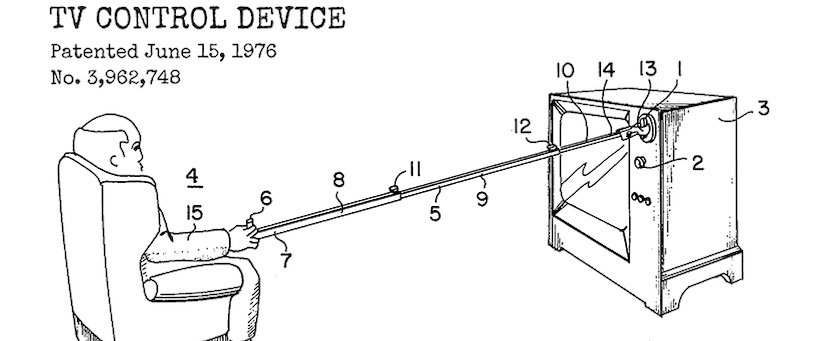How to patent an idea? Read here how it can be done
Is it possible to apply for a patent based solely on an idea? Yes it is!

Can you obtain a patent on just an idea and no more than that? The short answer is yes, it's possible! However, the idea needs to be sufficiently developed within the patent application. It's essential to realize that patents are generally not granted based solely on an idea. A patent pertains to an invention, and just an idea within a patent application isn't a complete invention. You'll need to develop your idea into a concrete concept that can be described in a comprehensive patent application. It might also be the case that your invention isn't yet complete, but you already have a prototype, model, or drawing. A patent grants you exclusive rights to the invention that stems from that idea, provided it meets certain criteria. This means you'll need to demonstrate the technical details and feasibility of your idea before obtaining a patent. So, before reaping the benefits of a patent, you must transform your idea into something tangible and technically viable.
In short, applying for a patent based solely on an idea is possible as long as the concept is sufficiently developed to qualify for protection. Why is this so important? The answer is that a patent is a valuable legal tool that protects inventors from unauthorized use of their innovations. For a successful patent application (meaning the application gets approved), the idea must meet strict criteria: it must be novel, inventive, and industrially applicable. To assess whether the idea meets these three criteria, it needs to be adequately developed within the patent application:
Three conditions for a Patent Application
- Novelty. This also means that the idea must not have been disclosed to the public worldwide. Even a minor publication can be considered a disclosure. A thorough search in patent databases like Espacenet can help determine the uniqueness of the idea. When it comes to novelty and discussing your ideas with other people, you should also consider using Non Disclosure Agreements (NDA). An NDA is a legally binding document signed by two or more parties to ensure the secure exchange of sensitive information. On this page, we provide an overview of NDAs and outline the key elements they should include.
- Inventive. An idea should go beyond obvious solutions and provide an original contribution. It shouldn't be obvious to someone knowledgeable in the field.
- Industrially Applicable. The idea must not only be innovative but also practically applicable on a scale relevant to the industry.
The Application Procedure
A patent application necessitates a detailed description of the idea and its implementation. The description must be comprehensible to an expert, so providing adequate details is crucial. Contrary to a common misconception, a working prototype is not required; the idea simply needs to be developed enough to be understood by an expert. If the idea isn't fully developed but essential details are available, a patent application can still be submitted. For instance, if the specific material for a component is yet to be determined and isn't crucial to the functionality, the application can still proceed. Once again, preparing a patent application is specialized work, and I highly recommend involving a patent attorney. For more information about the application process, you can visit the page about how to get a patent.
Alternatives to Protect Your Idea
Ideas that aren't sufficiently developed cannot be protected by a patent. However, there might be other rights that can offer protection. For technical innovations, a patent application is suitable, requiring a description with sufficient details. If the idea involves the appearance of a product, protection can be obtained through a design registration. A trademark registration is suitable for protecting names or logos. So, if a patent application isn't viable (yet), there might still be other possibilities.
Adding Extra Information After Submitting the Application?
After submitting a patent application, it's sometimes possible to provide additional information and evidence to strengthen the application. This could be important, for instance, if there are new developments or additional details that clarify the invention. Adding extra information must be done within specified deadlines, which vary depending on the jurisdiction (meaning the country or countries where the patent should apply) and the type of application. Generally, it's advisable to add relevant information as soon as possible after the initial application is submitted. If you anticipate needing to add extra information after the application, it's essential to discuss this as early as possible with the patent attorney.
Why Submit Early and Add Information Later?
Filing your patent application as soon as possible can provide important advantages, but it depends on your goals. For inventors, there are two primary reasons to file early: first, to establish a strong position for potential buyers if you want to sell your idea, and second, to secure protection for your concept while you continue to develop it. However, filing too quickly without sufficient evidence or testing can present risks.
In many cases, you, as an inventor may not have the resources to test their ideas fully before filing. Whether due to budget constraints, lack of expertise, or infrastructure, some may need external help to develop the idea further. In such cases, the question arises: can you file for a patent based on a promising but untested idea, and later supplement the application with experimental proof? The short answer is: yes, in certain circumstances. However, it's important to understand that adding experimental evidence after filing can be risky, particularly if the results turn out differently than originally described, leading to complications.
This strategy aligns well with the goal of selling an idea. A patent application, especially if filed early, signals to potential buyers that you are not only very serious about your invention, but also have taken formal steps to protect your innovation. It can increase credibility, attract interest, and even boost perceived value. But timing is crucial. File too early, and your application may lack the technical depth needed to be taken seriously. Wait too long, and you may lose your competitive edge or miss key opportunities. That's why it's essential to discuss your strategy with a qualified patent attorney. They can help you strike the right balance between speed and substance, and ensure your application supports -and not hinders - your goal of successfully bringing your idea to market.
The ideal situation is to include experimental evidence directly in the patent application. Unfortunately, once a patent is filed, you cannot add new information that changes the scope of the original submission. Nevertheless, some jurisdictions, including the United States and the European Union, do allow for the addition of supplementary evidence or clarifications during the examination process. This can include experimental data, technical explanations, or supporting arguments that help demonstrate the invention's novelty and inventiveness.
In fast-evolving fields, such as biotechnology or software development, where data can develop after the filing date, post-filing submissions can be valuable. However, it's important to note that only information already implied in the original application can be added. You cannot introduce entirely new subject matter that wasn't part of the initial filing.
Given the nuances of each jurisdiction and the potential for mistakes, it's vital to work closely with your patent attorney. They can guide you through the specifics of your case and ensure that you're following the correct process. Strategic use of post-filing submissions can indeed strengthen your patent application, but it's specialist work that requires a deep understanding of patent law of the countries you are interested in.
In summary, while it's possible to file a patent application without a fully developed prototype, doing so carries significant risks. Without at least a solid proof of concept, your application may be rejected for being too speculative or lacking inventive step.
But here's the challenge: in order to secure a patent, you must keep your invention secret until the application is officially filed. Yet developing a proof of concept often requires collaboration—with engineers, designers, or potential partners. And that's where things get tricky. Without a granted patent, your legal position is still fragile, and early disclosure of your idea can jeopardize your intellectual property rights.
This is the core of the balancing act: very often you need others to help validate and shape your invention, but you must protect it at the same time. Using tools like non-disclosure agreements (NDAs) and trade secret strategies is essential to shield your idea during this vulnerable stage. Smart collaboration—under the right legal safeguards—can help you gather the evidence you need while keeping your invention secure.
Depending on your goals, there are different paths forward: some inventors choose to build to sell, while others aim to license or sell their idea early, or even start and scale their own company. Whatever your route will be, protecting your intellectual property is a strong foundation.
